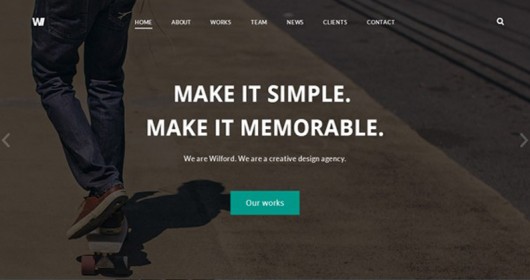How to Design a Mobile-Friendly Website In 2018

When it comes to website design today, there is a fact that you simply cannot avoid. Having a mobile-friendly website is a necessity, and can basically be the difference between having a large audience that will most likely convert to leads and a marketing campaign that is only going to end up as a big failure and alienate your users.
Furthermore, you need to keep in mind that Google intends to deliver relevant information to its users as fast as it can, and its algorithm now penalizes websites that do not conform to the mobile-friendly standard. In this article, we are going to discuss how to design a mobile-friendly website in 2018.
Pick the right approach
There is a variety of approaches when it comes to developing a website that is mobile-friendly. In fact, it is now possible to build a website in under an hour that is completely mobile friendly. It is up to you to choose the one that will create a one-of-a-kind, user-friendly, and memorable experience.
First of all, there is a responsive design. In this case, the URL of your web page, the HTML, as well as all the images that you use stay the same, but the CSS renders the whole website experience differently, according to the resolution of the browser that the person is using.
Then, there is RESS/Dynamic Serving/Adaptive design. In this approach, the website URL is the same, but the server sends different CSS and HTML according to the mobile device that is requesting a particular page.
Finally, there is the approach of creating a completely separate mobile website. In this scenario, commonly there is a website that is hosted on a sub-domain or a sub-folder. However, sometimes the website uses a URL of its own, parallel with its desktop version.
Make sure your pages load quickly
Mobile users aren’t very well-known for their patience. Therefore, it is essential that you create a website that runs fast, smooth, and doesn’t devour the data plan that they chose from their provider. There is a variety of tools that can help you determine how fast your pages are loading. Even better, some of these tools will actually tell you what you can do in order to improve your website. There is a number of things that could be slowing down your website, such as huge images, plugins that you don’t really need, an unnecessarily big number of URL redirects, and so on.
Use simple and diffused backgrounds
When creating a website, every designer loves to come up with amazing backgrounds and themes. These items are actually important for your brand, as your users start to relate to them in time. Yet, even with the fact that they are necessary, you can do something to make them less of a hindrance to the whole website experience for mobile users. Of course, you certainly don’t want to get rid of them. Instead, make them diffused and simple, so that your website’s navigation and features come to the forefront. This will keep the familiarity that your audience is used to, while also improving user engagement.
Get to know your competition
Sure, your goal is to create a website that is unique to your brand, but that doesn’t mean that you shouldn’t be aware of what your competitors are doing. Often, it will help you catch up with the current trends in mobile-friendly website development and actually give you some great ideas on how you can improve your own. Furthermore, this will help you stay ahead of your competition, which is, of course, what you want.
In the end, there is the fact that every designer has his own approach when it comes to a mobile-friendly website. Still, there are standards that you need to adhere to in order to be sure that your users are satisfied and engaged, and not alienated by what you have created. Follow the tips discussed in this article, come up with some of your own creative ideas, but also listen to your users in order to come up with the best design possible.
Subscribe & Get E-Mail Updates Delivered
Our informative Design related articles featuring the latest Resources for Web Designers & the Web get delivered via email dialy. Thousands of readers have signed up already. Why don't you subscribe as well, and get articles delivered to your inbox?






Leave a Reply